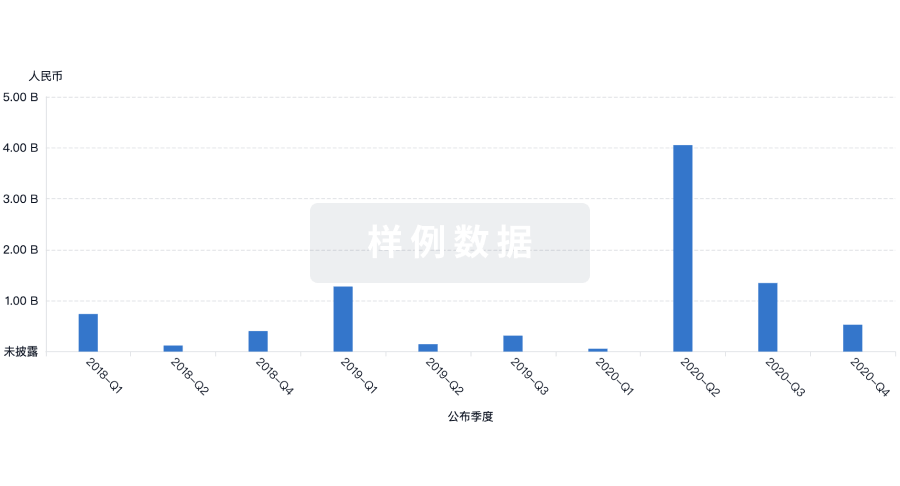预约演示
更新于:2025-01-23

Orbis Health Solutions LLC
更新于:2025-01-23
概览
关联
100 项与 Orbis Health Solutions LLC 相关的临床结果
登录后查看更多信息
0 项与 Orbis Health Solutions LLC 相关的专利(医药)
登录后查看更多信息
15
项与 Orbis Health Solutions LLC 相关的文献(医药)2024-01-01·Cancer Treatment and Research Communications
Tumor lysate particle only vaccine (TLPO) vs. Tumor lysate particle-loaded, dendritic cell vaccine (TLPLDC) to prevent recurrence in resected stage III/IV melanoma patients: Results of a phase I/IIa trial
Article
作者: Bohan, Phillip M Kemp ; Vreeland, Timothy J. ; Peoples, George E. ; Berger, Adam C ; Berger, Adam C. ; O'Shea, Anne E. ; Adams, Alexandra M ; McCarthy, Patrick M. ; Carpenter, Elizabeth L ; O'Shea, Anne E ; Clifton, Guy T. ; Valdera, Franklin A ; Sussman, Jeffrey J. ; Stojadinovic, Alex ; Hyngstrom, John ; Cindass, Jessica L ; Hickerson, Annelies T ; Faries, Mark B. ; Chick, Robert C. ; Adams, Alexandra M. ; Jakub, James W ; Shaheen, Montaser ; Hickerson, Annelies T. ; Valdera, Franklin A. ; Faries, Mark B ; McCarthy, Patrick M ; Clifton, Guy T ; Van Decar, Spencer G. ; Chick, Robert C ; Peoples, George E ; Vreeland, Timothy J ; Yu, Xianzhong ; Tiwari, Ankur ; Hale, Diane F ; Jakub, James W. ; Cindass, Jessica L. ; Carpenter, Elizabeth L. ; Van Decar, Spencer G ; Hale, Diane F. ; Wagner, Thomas ; Sussman, Jeffrey J
2023-08-01·Journal for ImmunoTherapy of Cancer
Prospective, randomized, double-blind phase 2B trial of the TLPO and TLPLDC vaccines to prevent recurrence of resected stage III/IV melanoma: a prespecified 36-month analysis
Article
作者: Thomas, Katryna ; Van Decar, Spencer ; Hale, Diane ; Hyngstrom, John ; Yu, Xianzhong ; Vreeland, Timothy ; Kemp Bohan, Phillip ; Jakub, James ; Smolinsky, Todd ; Adams, Alexandra M ; Carpenter, Elizabeth Lee ; Hickerson, Annelies ; O'Shea, Anne E ; Cindass, Jessica ; Peoples, George E ; Valdera, Franklin A ; Faries, Mark ; Sussman, Jeffrey J ; Tiwari, Ankur ; McCarthy, Patrick ; Wagner, Thomas E ; Chick, Robert Connor ; Shaheen, Montaser F ; Berger, Adam C ; Clifton, Guy Travis
2023-03-01·Cancer Immunology, Immunotherapy
Divergent clinical outcomes in a phase 2B trial of the TLPLDC vaccine in preventing melanoma recurrence and the impact of dendritic cell collection methodology: a randomized clinical trial
Article
作者: Tiwari, Ankur ; Hickerson, Annelies T ; Berger, Adam C ; Jakub, James W ; Sussman, Jeffrey J ; Kemp Bohan, Phillip M ; Adams, Alexandra M ; Shaheen, Montaser F ; Carpenter, Elizabeth L ; Chick, Robert C ; Vreeland, Timothy J ; Clifton, Guy T ; Faries, Mark B ; Hyngstrom, John R ; Hale, Diane F ; O'Shea, Anne E ; Valdera, Franklin A ; Yu, Xianzhong ; McCarthy, Patrick M ; Peoples, George E ; Wagner, Thomas E
100 项与 Orbis Health Solutions LLC 相关的药物交易
登录后查看更多信息
100 项与 Orbis Health Solutions LLC 相关的转化医学
登录后查看更多信息
组织架构
使用我们的机构树数据加速您的研究。
登录
或

管线布局
2025年01月23日管线快照
无数据报导
登录后保持更新
药物交易
使用我们的药物交易数据加速您的研究。
登录
或

转化医学
使用我们的转化医学数据加速您的研究。
登录
或

营收
使用 Synapse 探索超过 36 万个组织的财务状况。
登录
或

科研基金(NIH)
访问超过 200 万项资助和基金信息,以提升您的研究之旅。
登录
或

投资
深入了解从初创企业到成熟企业的最新公司投资动态。
登录
或

融资
发掘融资趋势以验证和推进您的投资机会。
登录
或

来和芽仔聊天吧
立即开始免费试用!
智慧芽新药情报库是智慧芽专为生命科学人士构建的基于AI的创新药情报平台,助您全方位提升您的研发与决策效率。
立即开始数据试用!
智慧芽新药库数据也通过智慧芽数据服务平台,以API或者数据包形式对外开放,助您更加充分利用智慧芽新药情报信息。
生物序列数据库
生物药研发创新
免费使用
化学结构数据库
小分子化药研发创新
免费使用